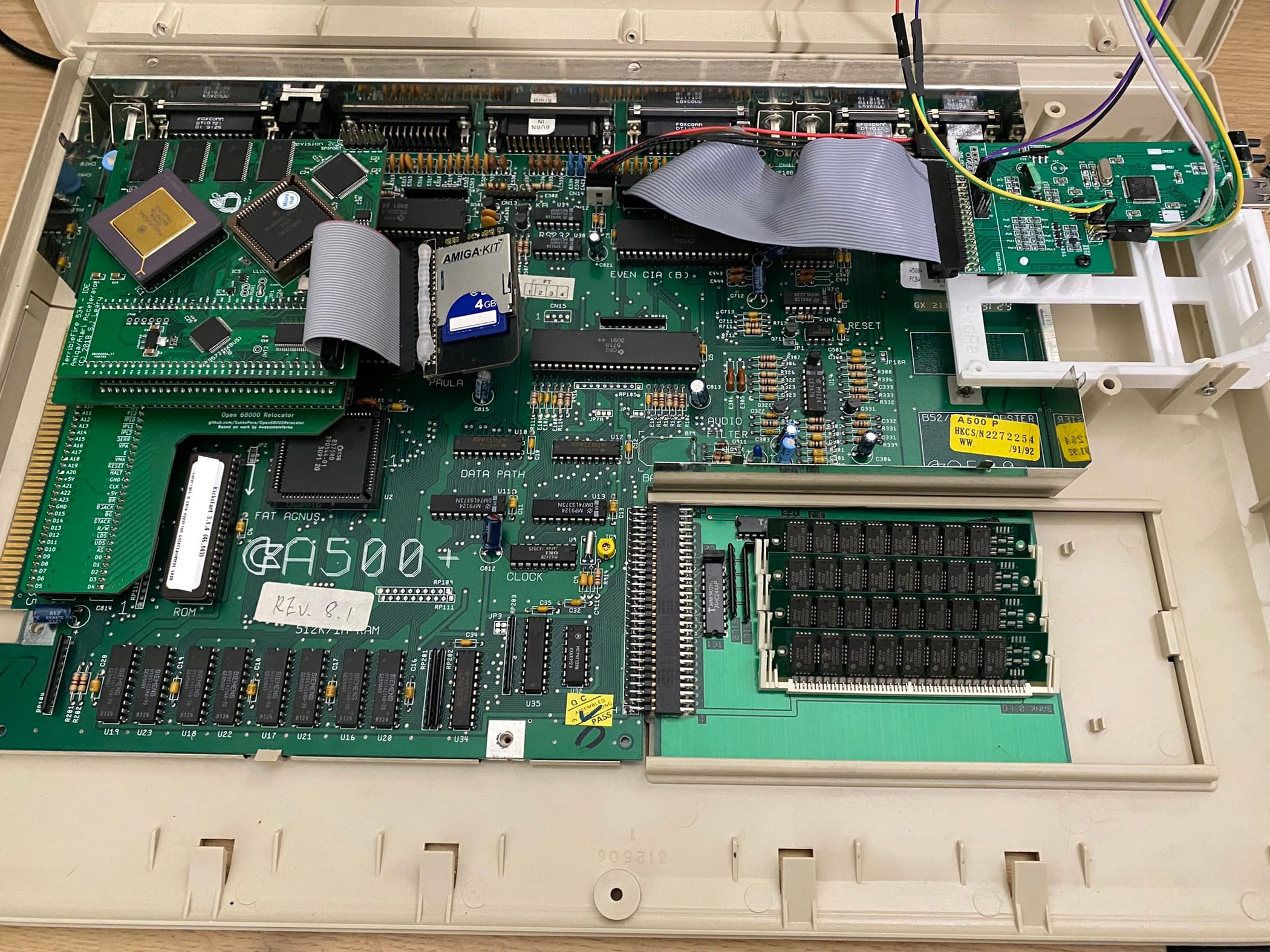After my TF534 accelerator was installed I decided that I needed to try some more upgrades to my Amiga. Some worked out, some didn’t. This post is my journey over the last couple of weeks.
Ceramic CPU
My accelerator came with a 33MHz 68030 CPU in a plastic PGA package. My board is clocked at 40MHz and the CPU was getting hotter than I was uncomfortable with. I therefore decided to switch it to a 50MHz ceramic variant. The problem with this is it is difficult to find a genuine one. There are many lower clock CPUs out there that have been rebadged as a higher clock speed to get some more cash.
I went to AmigaStore.eu who sell 68030 50MHz CPUs which they have certified work reliably.
Once I received it, there was a simple matter of removing the old CPU using my Wera chip lifter and inserting the new one.

It now runs much cooler than before.
Fast(ish) RAM Upgrade
First a quick word on RAM types in an Amiga. There are three types of RAM in an Amiga 500:
- Chip RAM – The RAM that is built-in to an Amiga (and the trapdoor expansion board in an Amiga 500 Plus). This RAM can be access using DMA by all the chips on the system.
- “Slow” RAM – If you put some RAM in a trapdoor expansion board of a regular Amiga 500 it will become slow RAM, this is RAM that is accessed via the Agnus chip and doesn’t have DMA for other chips. It should have faster access for the CPU, but due to bus contentions actually isn’t normally fast.
- Fast RAM – This is RAM that only the CPU can access. This is typically on expansion boards that fit under the CPU. It is very fast for the CPU to access but has no DMA for other chips.
The Terrible Fire board has Fast RAM onboard that runs at the CPU speed. Which can give very good acceleration, especially when the Memory Management Unit of the CPU is enabled in software.
I wanted to see if it was possible to expand the RAM of my Amiga any further. I found a relatively cheap 6 MB Fast RAM upgrade on eBay so I thought I would try that.

Whilst this is technically Fast RAM it would run at the original CPU clock of around 7 MHz. This should in-theory be fine as the TF RAM has a higher priority. The TF board deliberately sets its RAM address so high that it would not interfere with such boards.
It turns out it is 6 MB because it was an 8 MB board with a 2 MB chip on the board was faulty, unfortunately the board was still reporting to my Amiga that it had 8 MB on board and caused issues with my Amiga.
To make matters worse when testing I first removed my CPU relocator board to make sure that wasn’t causing any issues, and managed to snap a pin on it.

After a lot of work I managed to temporarily replace the broken connector with a square pin variant, but it didn’t sit right. So, I bought a kit to build a new one, replaced the top socket holes with a real DIP socket and used this instead.

As for the RAM board, it may be possible that the Autoconfig chip was not reprogrammed for 6 MB. Either way the seller was very apologetic and sent me a fully working 8 MB replacement.
I installed this and it was working fine, RAM testing well.

That is until I got the MMU running in Workbench. Then I had disk read issues and various other data issues. My theory is that because this “Fast RAM” runs at 7 MHz instead of 40 MHz of the CPU board.
I’ve ended up removing this board and will use it in another restoration job in the future.
1 MB Trapdoor
This one was a relatively simple upgrade. I managed to get a good price on eBay an old 1 MB trapdoor RAM upgrade for Amiga 500 Plus machines. It uses SIM modules for the upgrade. This was pretty much a case of removing my 0.5 MB board and inserting this one. It immediately gives 2 MB of Chip RAM.



Leave a Reply